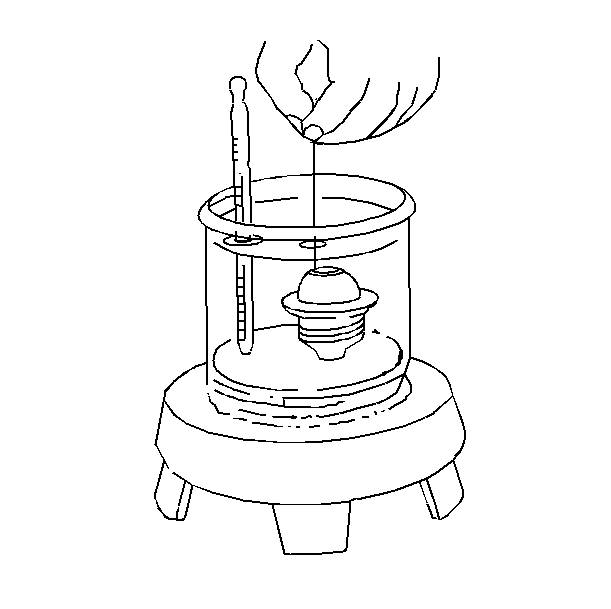A thermostat that stays closed or only partly open, restricts the flow of the coolant in the system. This condition can cause the engine to overheat. A thermostat that is stuck in the full open position prevents the engine from reaching a normal operating temperature. Cold engine operation causes a buildup of excess carbon deposits on the following components:
| • | The pistons |
| • | The rings |
| • | The valves |
Can also result in poor fuel economy and lack of heater performance.
- Remove the thermostat(s).
- Suspend the thermostat(s) and a thermometer in water.
- Heat the water.
- Observe the thermostat (s).
- Ensure that the temperatures are to specifications.
- Replace the thermostat(s) and the gasket(s) as necessary.
- Fill the cooling system. Refer to Cooling System Draining and Filling .
- Run the engine until the engine reaches normal operating temperature.
- Inspect for coolant leaks around the coolant outlet and the gasket.
- Inspect the coolant level. Add coolant as needed.
- Install the radiator cap.
Refer to Engine Coolant Thermostat Replacement for gasoline engines.
Refer to Engine Coolant Thermostat Replacement for diesel engines.

Ensure that the thermometer is close to the thermostat(s).
| 4.1. | Record the temperature when the thermostat(s) begins to open. |
| 4.2. | Record the temperature when the thermostat(s) is fully open. |
Refer to Engine Cooling System Specifications .
Refer to Engine Coolant Thermostat Replacement for gasoline engines.
Refer to Engine Coolant Thermostat Replacement for diesel engines.
